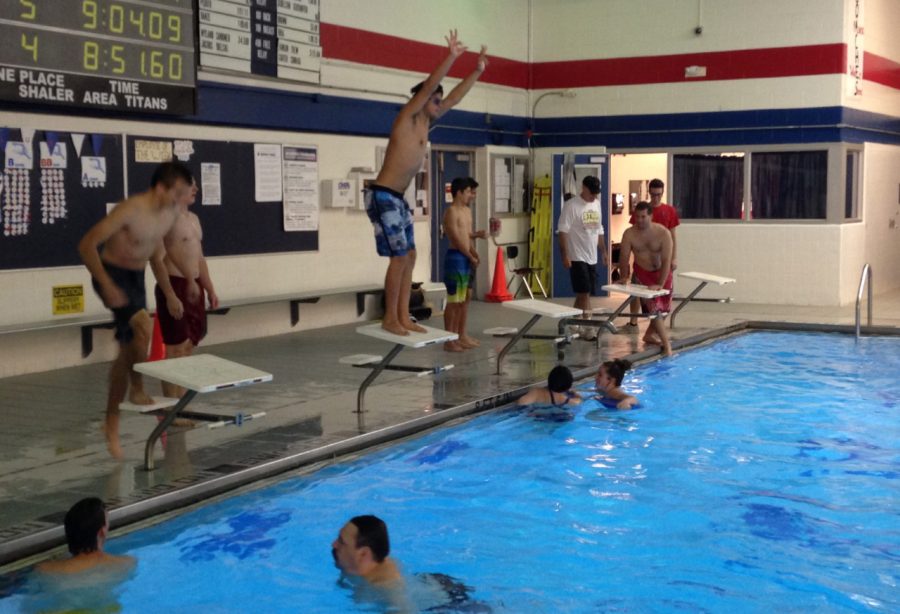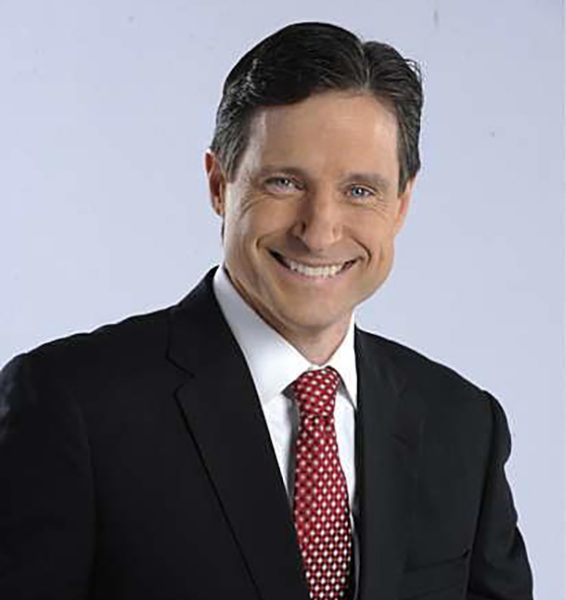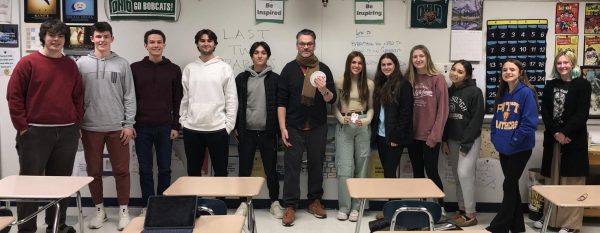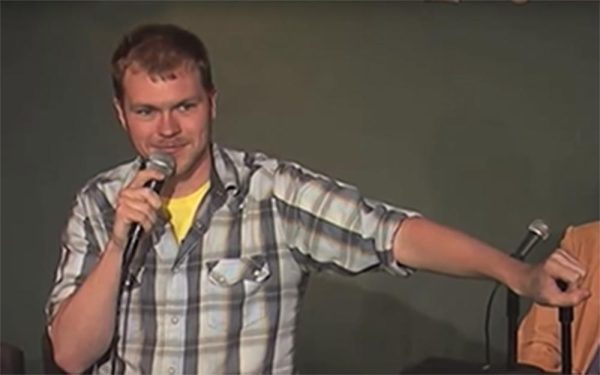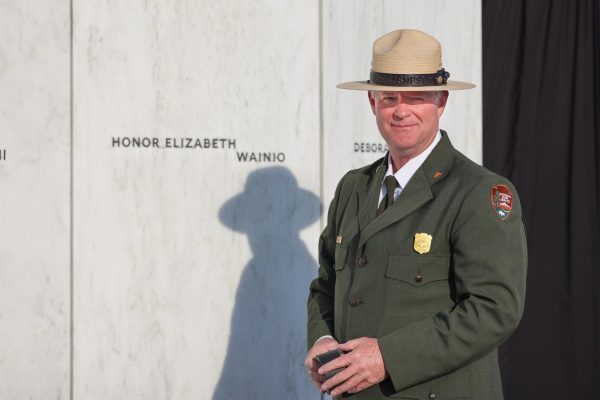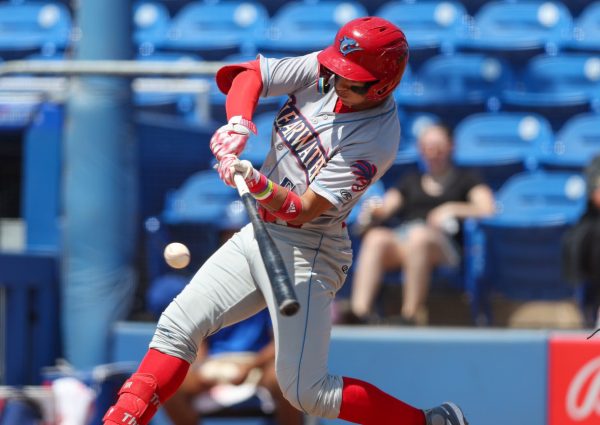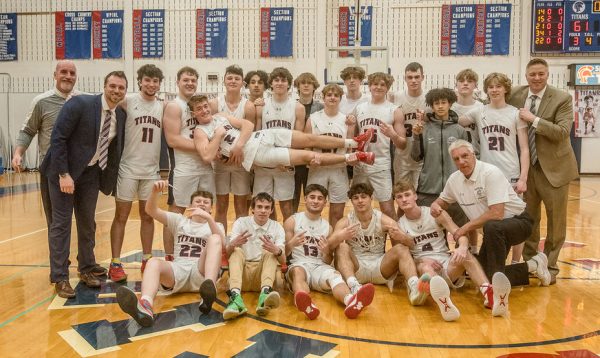Shaler Adaptive Aquatics provides special program for those with special needs
The Shaler Adaptive Aquatics for Health program provides swimming and socialization for those with special needs.
Shaler Adaptive Aquatics for Health (SAAH) is a program coordinated by Shaler Area teachers Mr. Jim McDermott and Mrs. Juliana McDermott. The goal of the program is to improve socialization and aquatics education for disabled participants. They meet every Sunday from 11:30 am to 12:30 pm for a fall and spring swimming season at the indoor pool at the Shaler Area Elementary School and the township pool at Kiwanis during late spring.
This unique program is open to those involved in special education. No matter the disability, Sundays are for the kids who do not fit in the conventional swimming lessons on Saturday morning. Although the program gives preference to families in the Shaler Area School District, if enough volunteers and spots are available, families from out of the district can participate.
“For decades there wasn’t anything else in the surrounding communities like it,” Mr. McDermott said. “There are activities around for kids like this, but still there aren’t too many swimming programs around. Not better or worse, just different,” he added.
When the group isn’t swimming, they still meet to do other activities such as a summer picnic at the pavilion at Kiwanis, a fall hayride at Cheeseman Fright Farm, a holiday party at the fire hall, and they are currently trying to bowl as they once did before.
“Shaler Adaptive Aquatics for Health has existed for 40 years other than COVID so you figure there are a lot of memories like the kids dancing while the DJ plays music at the party, the kids picking out their pumpkins at the patch, and memories at the campfire. There’s definitely things they can look forward to,” Mr. McDermott said.
The reason the program has the chance to coordinate exciting activities at a lower cost for the parents is through donations from numerous local organizations. Organizations like the Kiwanis Club, Glenshaw Century Club, Veterans of Foreign Wars or VFW, and American Legion have all contributed to make it possible.
“We want to keep costs as low as possible for the parents since they have enough expenses having a child with special needs,” Mr. McDermott said.
Although Mr. and Mrs. McDermott have been in charge for the past 15 years, the program has existed far longer than that. The idea developed in 1982 when Mary Lou Hapner and her brother realized that there weren’t many opportunities available for her son to socialize and swim, so she created one.
She went to the township to gain approval, visited the commissioners to help coordinate Sundays at Kiwanis and then talked to the school board to coordinate use of the indoor pool at the elementary school. In the end, everyone felt that the program was worthwhile, demonstrated by the fact that the program has lasted 40 years.
Mr. McDermott explained how those involved have created a sense of family and unity. Families might meet through the program, make friends with each other, and continue the friendship outside of Sundays to hang out and bond further.
A sense of unity comes into play knowing that those involved share the same circumstances so they have something to identify one another with. No longer is it a program, but a family helping each other navigate through life.
“If it wasn’t for [Mr. and Mrs. McDermott] we would not have a program and our kids would not be a part of the community,” Mrs. Gina Bollman, an aide at Shaler Area High School and mother involved in the program, said. “I don’t know what I’d do without it.”
Another important aspect to the program is the volunteers. The program relies on one-to-one interaction between the participants and volunteers, so every child in the program requires a volunteer. Some adult volunteers left due to COVID and health issues that accompanied it which was a major setback. It’s already hard to get adult volunteers, so the program relies on students from the high school.
A majority of instructors are juniors or seniors, who donate their time and talent, but eventually they graduate and then the McDermotts are back at square one again. There is currently a waiting list of children that want to participate in the program, but are not able to due to the lack of volunteers.
“It’s really sad. I would say we have five to seven people on a waiting list and I feel terrible. I have kids and I know what it’s like when you want your kid to join the soccer team or the baseball team and you’re like, ‘What, I can’t? But my kid wants to,’” Mr. McDermott said.
One issue that may keep students from volunteering is misconceptions about what is needed. One may look at the flier and assume that he/she has to be a teacher. That’s not necessarily the case. The main role of a volunteer is to just get in the water, help with socialization, and some sort of exercising.
“My role in the program is to not necessarily teach the kids and adults how to swim, but to swim with them and make sure they are getting some sort of exercise by swimming,” junior Mckenzie Mine, a volunteer within the program, said.
“So really the program is just, ‘Will you be a swim buddy with a kid who wants to get in the water?’” Mr. McDermott said.
There are many benefits that not only come with volunteering at the program, but volunteering anywhere. Students have a chance to earn volunteer hours as well as having the experience to put on a resume. Mr. McDermott has also written many recommendation letters based on the students’ work towards the program.
Some volunteers even discover a passion through the program, like for teaching or instructing. It can also be rewarding simply guiding others towards their goals and donating time to help others. If you would be interested in volunteering, please email the McDermotts at [email protected].
“You never know, in life as you get older you realize you shouldn’t turn down many opportunities to experience something new because you really can’t predict what’s going to happen,” Mr. McDermott said.
More importantly, however, the program provides a space for those who normally can’t express themselves within a conventional community and environment. It allows joy and fun, free of judgment or feeling like one doesn’t belong. Together everyone shares learning obstacles and laughs, as well as creating a family.
Some people have traditional sports teams or activities that they can join. Those who are unique have Shaler Adaptive Aquatics for Health. Everyone deserves a chance for an activity that represents them and includes them into the community.
In Mr. McDermott’s words, S.A.A.H is “about seeing the kids discover that they can do it. Every kid is scared to go into the deep end at first. Every kid is scared to let go of the kick board at first. But you watch them grow,” he said. “Before you know it, they are in the deep end…and then you realize anyone can do all of these things even with the different needs that they have.”
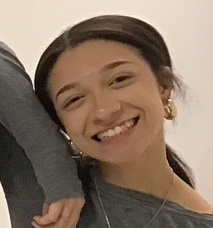
Hi, I’m Kamaria and this is my second year being a part of the staff for the newspaper. I really love anything that has a story. I do some stuff for...



